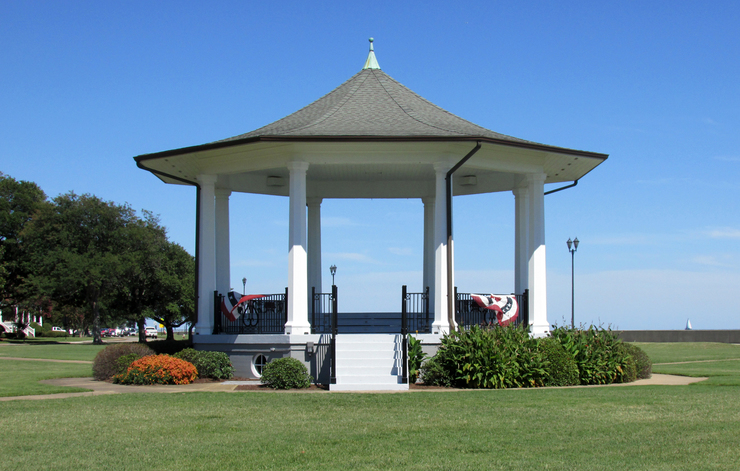
Fort Monroe Bandstand, Continental Park, Fort Monroe, Hampton,
Virginia, photo: August 2017. A new bandstand to replace the one
destroyed by hurricanes in 1933, designed by Capt. Harrington W. Cochran and
built by "Civilian Conservation Corps (CCC), Public Works Administration
(PWA), and the Civil Works Administration (CWA) all either funding projects
and/or providing labor for improvements across the post."[1]
Construction commenced in the winter of 1934 and was
completed by April 7 of that year for the inaugural performance by the 2nd
Coast Artillery Band.[2,3]
WPA laborers were [at Fort Monroe] in mid/late 1930s working on other
projects, including making alterations and repairs to buildings including
the bandstand."[1]
Incidentally, this is the spot where the first African slaves were introduced into what is now the United States, 1619, and where 500,000 slaves emancipated themselves during the Civil War[4].
References
- Correspondence with W. Robert Kelly, Casemate Museum Historian, Fort Monroe Authority, Fort Monroe, Virginia, 9 August 2017, citing the diary of Captain Cochran which is in the Fort Monroe Department of Public Works record collection.
- Fort Monroe Walking Tour Guide, Casemate Museum, Fort Monroe, Virginia (undated) [this document erroneously cited the WPA instead of the PWA and CWA; it will be corrected].
- Captain Cochran's Bandstand, Fort Monroe website, accessed 2 August 2017. This too cited the WPA instead of the PWA and CWA, and will also be corrected.
- Casey Cep, "Rescue Work", The New Yorker, 3 February 2020.
|
Photos by George and Connie Gilmer, taken May-August 2017.
|